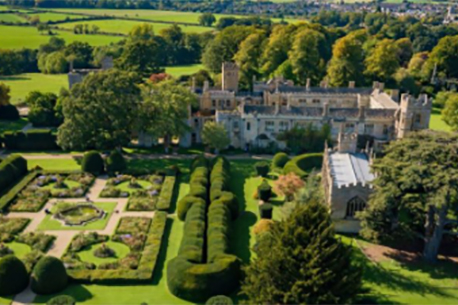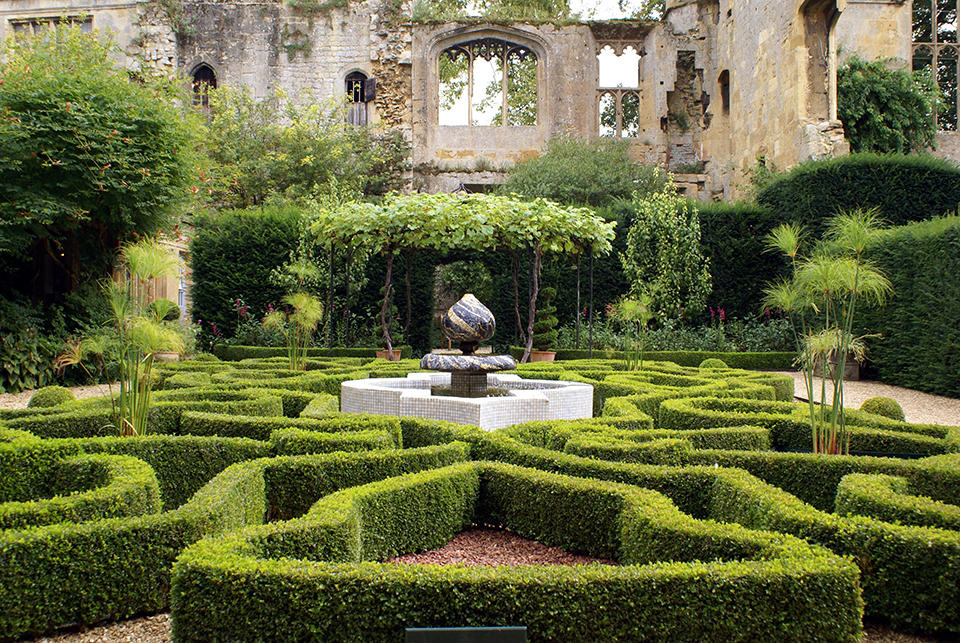Privacy was one of the most critical inventions in Late Medieval Europe. From private devotions enacted in prayer books to the lush flowery borders in the walled gardens and mirrored in the borders of these psalters, gardens played a significant role in the imagination of the European elites. A new doctoral dissertation explores this private world from a historical anthropological perspective.
RESEARCH:
Early Tudor Gardens and Their Design: What Did They Look Like, and Why?
By Rachel Hopkins
A dissertation submitted in partial fulfillment of the requirements for the degree of Doctor of Philosophy in Anthropology
University of Reno 2023
ABSTRACT:

This study explores the role of privacy in early Tudor castle garden design. Rachel Hopkins aims to identify which aspects of the garden may relate to privacy and to determine how elites connected their private spaces inside the castle with their gardens. Literature on medieval privacy has almost exclusively focused on interior spaces, so this study offers a new avenue of research by focusing on exterior spaces. I address the questions of how size and location affect the privacy of castle gardens, as well as asking what the relationship was between interior and exterior private spaces. In her dissertation, Rachel Hopkins employs an integrated study of documentary and landscape archaeology to answer these questions.
This qualitative study uses primary written sources, archaeological field surveys, previous archaeological excavation data, and phenomenology to identify how privacy was created and experienced by the elite residents at three different Tudor-era castles: Sudeley Castle, Wressle Castle, and Framlingham Castle.
The findings illustrate how vital agency was to the creation of privacy, as individuals used their space in particular, personal ways. Each individual owner emphasized different aspects of the garden to create their private space, including location, access, and visibility. The common thread among the gardens in this study is the enclosure of the sites, as almost all were surrounded by a hedge or wall. The one garden that was not enclosed, the Queen’s Garden at Sudeley Castle, was likely used for a different purpose than the others.
The results of this study indicate that the ability to adapt a garden design to individual privacy requirements was crucial to the early Tudor elites. This dissertation offers an insight into the purpose of privy gardens at castles and the importance of privacy in everyday life in the early Tudor period.
Future research should include the addition of royal castles, as the king may have had different privacy needs than members of his court, as well as a geographical comparison—comparing both proximity to the Scottish border and proximity to London.
FEATURED PHOTO
The Garden at Sudely Castle. © Saphire Ovadia/Dreamstime/44849072
KNOW MORE:
Nestled in the beautiful Cotswolds, Sudeley Castle was one of the Tudors’ most beloved palaces, and often housed those closest to the crown. It’s where Anne Boleyn stayed with Henry VIII while he made his decision to dissolve the monasteries, and where Katherine Parr, Henry’s last wife, later lived after he died. Between 2019 – 21, a team of archaeologists have been investigating the remains of a rare Tudor garden that played host to some of history’s most famous royals. This dig was made possible by our crowdfunders.
